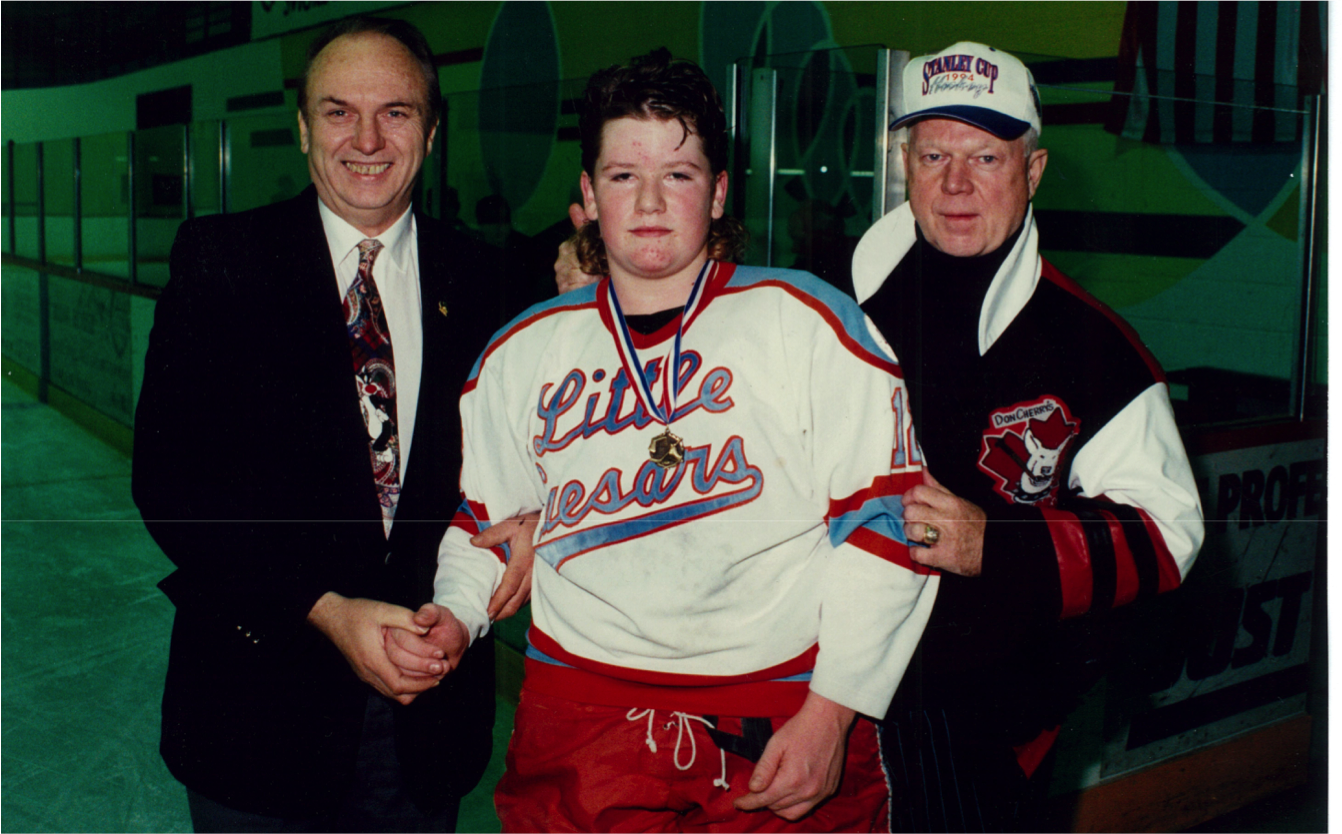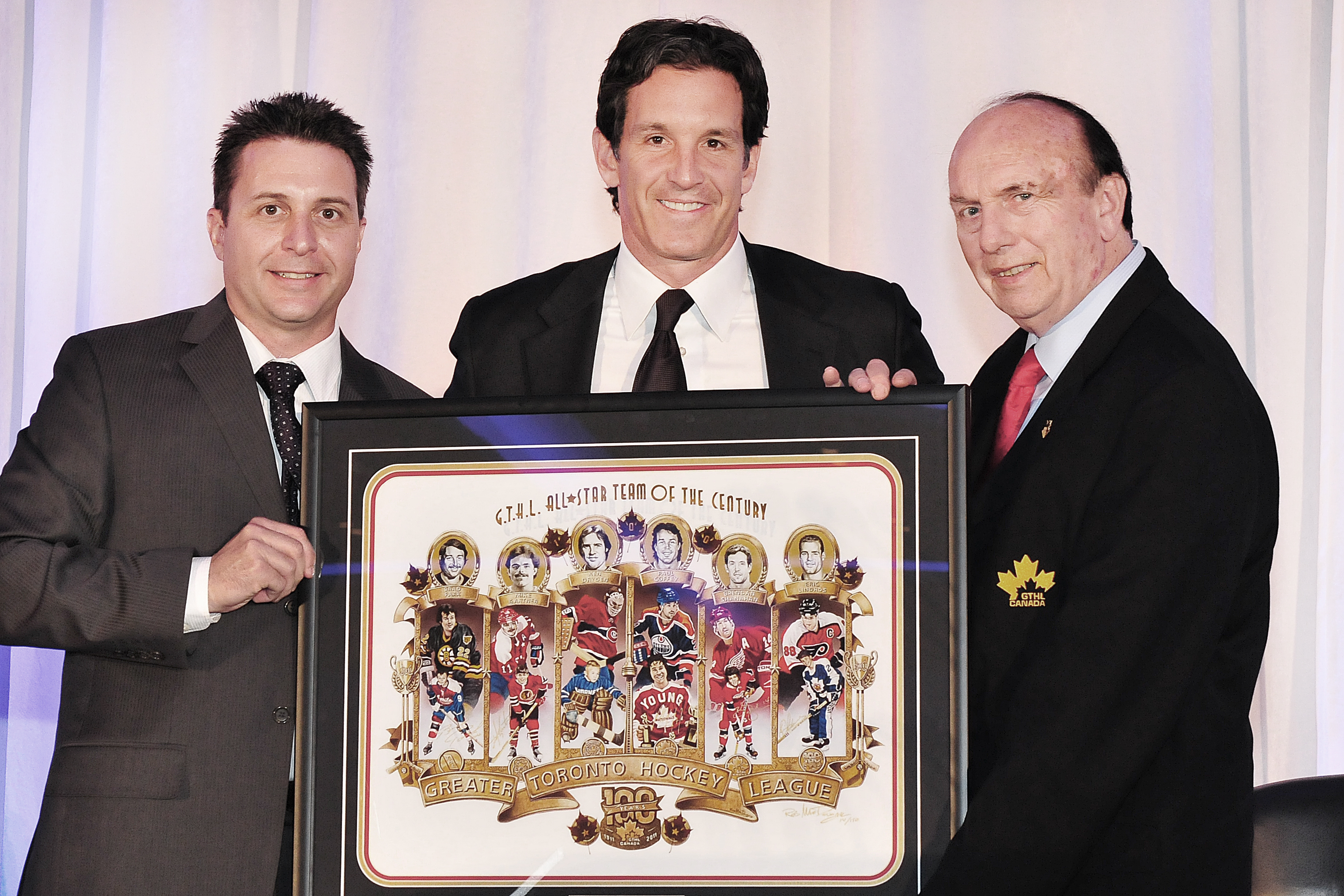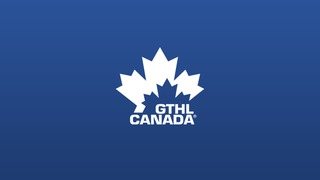LEADING THE WAY: (Above) John Gardner’s vision and passion for refining the game helped the GTHL become a leader in minor hockey. (ERIN RILEY / GTHL Archives)
“I was the youngest guy to be president. I didn’t intend to be the oldest.”
What is one thing you would dedicate four decades of your life to?
For John Gardner, that one thing was the Greater Toronto Hockey League – or, as it was known in 1975, when he was elected to the Board of Directors, the Metropolitan Toronto Hockey League. Five short years later, at age 40, Gardner became the youngest president in league history.
Forty years and countless hours at the rink later – between flights overseas for his work in the airline industry – the Toronto native hung up his proverbial skates after announcing in April he would not seek re-election for his volunteer position as GTHL president.
Unbeknownst to Gardner, he developed quite the celebrity status during his years with the GTHL.
“It always amazes me how famous John is and he doesn’t even realize,” said GTHL executive director Scott Oakman. “John would walk into meetings and people treated him like he was the Prime Minister of Canada.”
Luckily the quasi-celebrity took time to chat with Breakout over the summer, sharing stories from his tenure as president, his sometimes controversial views on the state of minor hockey and why he devoted 40 years to our great game.
What is your earliest memory of our game?
My parents had a house in North Toronto and we flooded the backyard and I used to skate around out there. My mother had a clothesline and one night the lights weren’t very good and I nearly choked myself, so that was the end of my skating in the backyard. I guess I really got into hockey when I played varsity at the University of New Brunswick; it just sort of happened.
What kept you around as a volunteer for 40 years?
I wanted to see more kids involved in the sport and I wanted to make it as appealing as possible. Players are not commodities, they’re human beings and they should be treated as such. There were some old archaic regulations that needed changing, and change in sport, especially in hockey, is sometimes difficult to come by in a hurry.
As the saying goes, time flies. Does it feel like that when you think back to when you joined the Board in 1975?
It does in a sense. I remember clearly that I used to fly overseas on airline business with Finnair. I could leave Toronto on a Friday night flight to Helsinki, do business on Saturday and be on a Sunday flight back. I’d get back by three o’clock in the afternoon, go to the rink to watch hockey for the evening and nobody even knew I was missing.
When did you retire from the airline business?
I still do some of it! I’m not one of those guys that retires by sitting down in a chair and reading books.
So you’ll still be working well into your “retirement”?
I didn’t retire; I just stepped aside as president. Don West is an excellent man to take over that position. They’ve made me chairman of the advisory committee.
What took top priority for you when you were in the office each day as president?
The most important thing for me was when I got an email from a player, I always answered [those] first. What I endeavoured to do was try and correct the problem.
What is the biggest challenge facing our game today?
The cost factor. If hockey doesn’t band together and spend more time going after politicians to change their attitude about what they are charging for ice, the game is going to suffer and there will be fewer participants. Kids are having the best time of their lives when they’re on the ice.
How do we overcome that challenge?
First, I think the league needs to find more corporations to get involved in the sport to help kids that can’t afford to play. Second, the game needs to change by getting rid of the old residential wards that have been there for 30 or 35 years.
By all accounts, your strongest opinions surround residential boundaries.
Let’s face it, our demographics are changing. A lot of areas that used to be thriving rural communities are diminishing in size. We are the only minor hockey league in Canada that gives a player complete freedom of movement at the end of every year. To me that’s a small step toward success.
Why is it so important to you that players have a choice of where to play?
If you want more players and parents to become involved and supportive of the sport, you’ve got to recognize the times and you’ve got to give them that freedom.
What is the most rewarding experience you had during your tenure?
Oh boy, I’ll tell you there are a few examples from the supreme to the sublime to the ridiculous. There was a Canada unity tournament we set up with the federal government for the 125th anniversary of Confederation. It consisted of 60 teams from across Canada, and it was phenomenal.
You were overseas plenty with work. Did the GTHL ever venture over there too?
We took an all-star team overseas. It was April and the players had just turned 15. We played against nine Russian teams and ended up winning the Russian international bantam championship. That to me was a great experience; Tyler Seguin, Tyler Toffoli and Jeff Skinner were all on the team.
Under your guidance, the League became the first to have each player wear a maple leaf on jerseys. What was your reasoning behind this?
I designed this maple leaf and got the Board of Directors to adopt it. I was getting criticism from other hockey bodies, so I said ‘is there a crime in being Canadian?’ Nobody wanted to answer that question. It stayed that way because I think kids should be reminded of their nationality.
You also helped the League become a leader when dealing with checking to the head and concussions. Why was this a top priority for you?
We were the first to make it mandatory that you couldn’t return to play without a doctor’s permission. The idea was to reduce the concussions and prevent them as much as possible. I always have had a very good Board, and they supported a lot of these ideas.
Legend has it you recorded scores and schedules from your home for the former Bell Minor Hockey Hotline.
Oh God, yeah, It was 1-800-TIPS-303. (Laughing) I was told I read over a quarter of a million scores over about three or four years before the computer age took over, which was a delight. I used to sit at the dining room table every night around midnight with a fax feeding me the scores. It was interesting but I had no ambitions to be a professional announcer, I’ll tell ya that (laughing).
Who was the most interesting person you came across in your role as GTHL president?
The one person I will single out is Don Cherry. I’ve known him for 25 years and I think he hasn’t ever declined a request I’ve made. In fact, as one previous president of Hockey Canada said years ago, ‘Gardner, I haven’t had my name mentioned by Don Cherry once and he mentions you every third week.’ I said, ‘Well that’s because we’re in the Big Smoke, eh?’
Any words of wisdom for your successor?
You’ve got to be able to innovate, and to innovate for the positive. I would like to see more kids get involved in the sport because it’s healthy. Keep the kids healthy, keep them interested and keep the cost down.
Final thoughts?
If you’re not in the game for the players, then you’re not in it for the right reasons.

EARLY CONNECTIONS: It could be argued – and probably has been – that
Gardner’s celebrity status is similar to that of his longtime friend Don Cherry.
(GTHL Archives)
FROM THOSE WHO KNOW HIM BEST
Some of Gardner’s closest colleagues shared their thoughts on his impact on the game
Defining characteristic?
“He is the most determined person I know. When he got behind an initiative or concept, he pushed for it without giving in.” – Scott Oakman, GTHL Executive Director
Legacy?
“He continued the tradition of the [former] THL. It was run very well and he worked very hard to provide young people the opportunity to be hockey players.” – Jim Gregory, NHL Senior Vice President of Hockey Operations
Parting thoughts?
“Some people can’t be replaced. I wish him the best during a well-deserved retirement – if retirement is possible.” – Joe Drago, Chairman of Hockey Canada
“John Gardner put his stamp on the game and has made the game better for all of its participants.” – Bob Nicholson, Chief Executive Officer of Edmonton Oilers
LOOKING BACK: Gardner, posing alongside GTHL executive director Scott Oakman
and alumnus Brendan Shanahan, was in year 31 of his presidential tenure when the
GTHL celebrated its 100th anniversary in 2011. (EMILE FAGA / GTHL Archives)
PLAYERS FIRST: The GTHL has a strong relationship with the Ontario Hockey League
thanks in large part to the efforts of Gardner and OHL Commissioner David Branch
(middle right). (AARON BELL / OHL Images)








